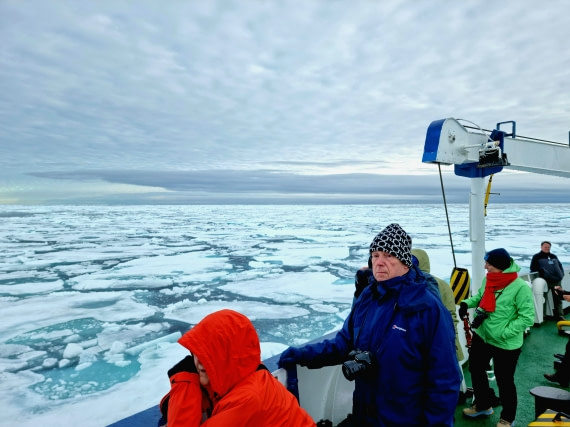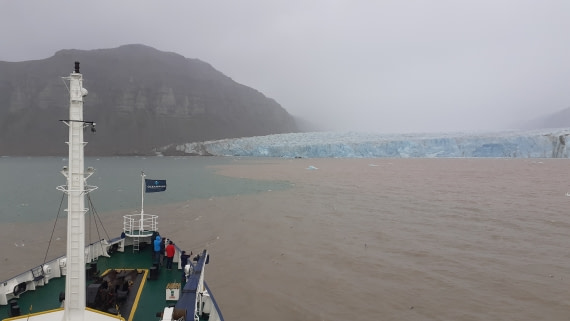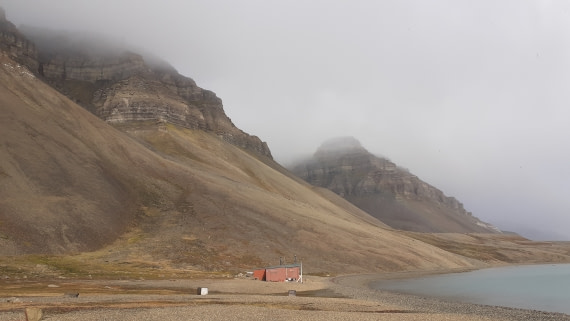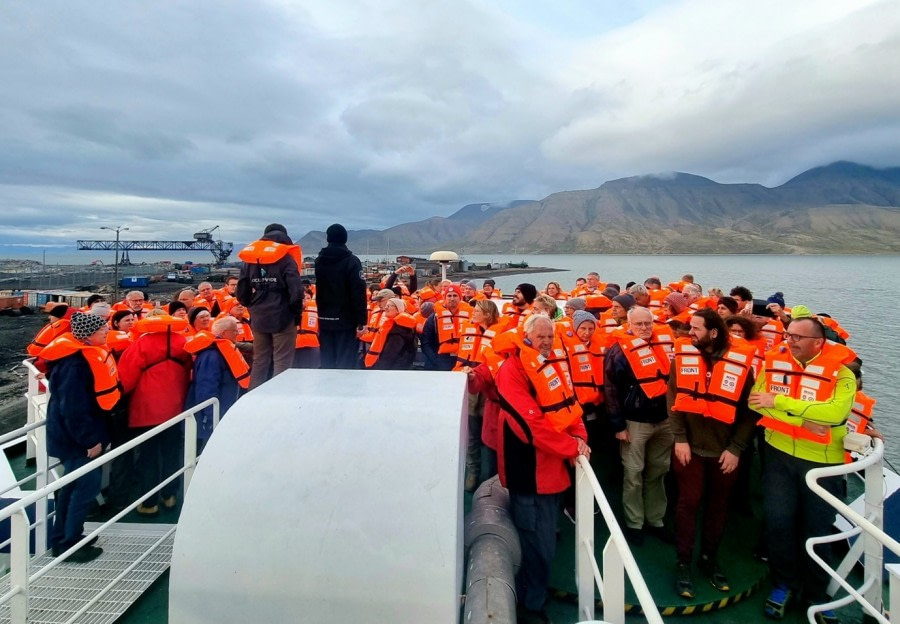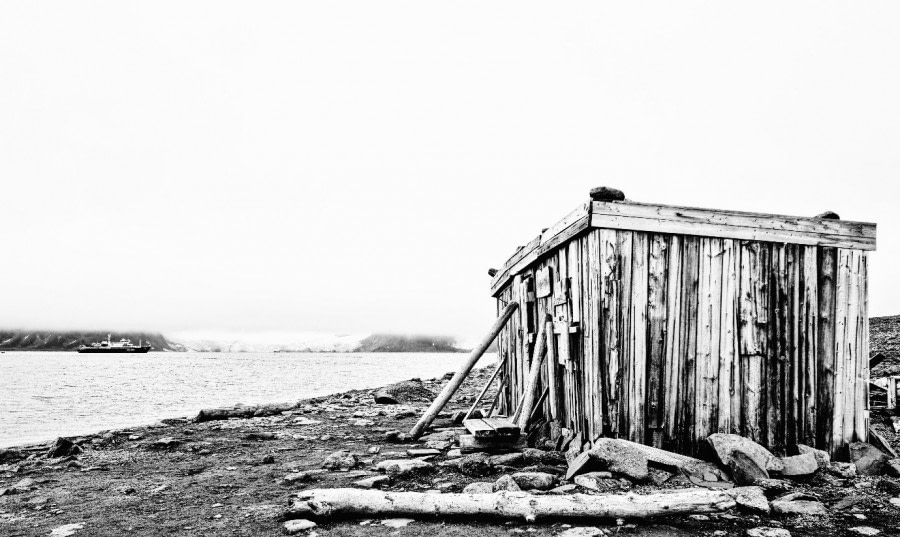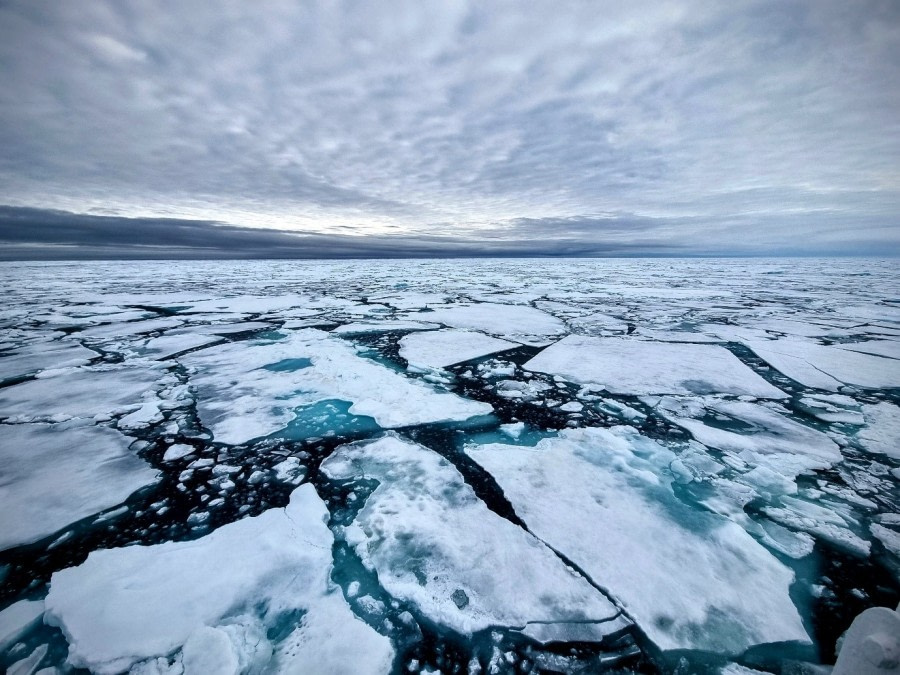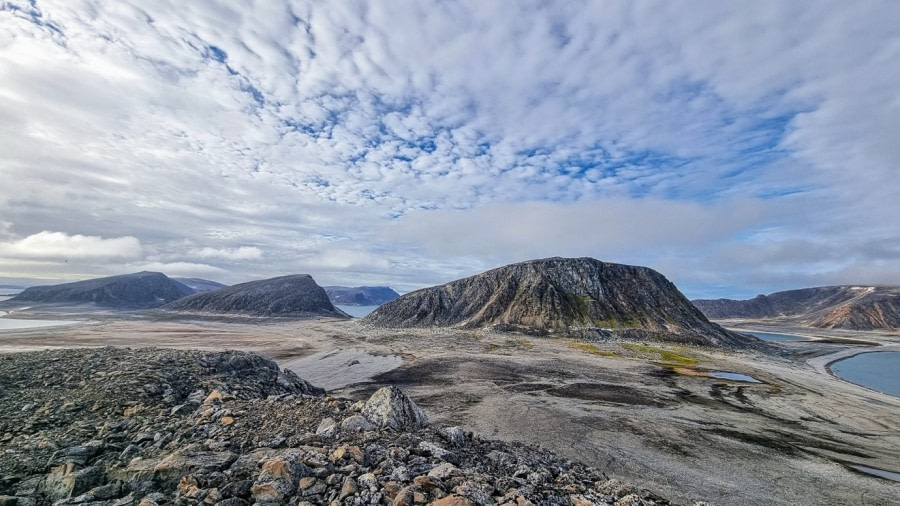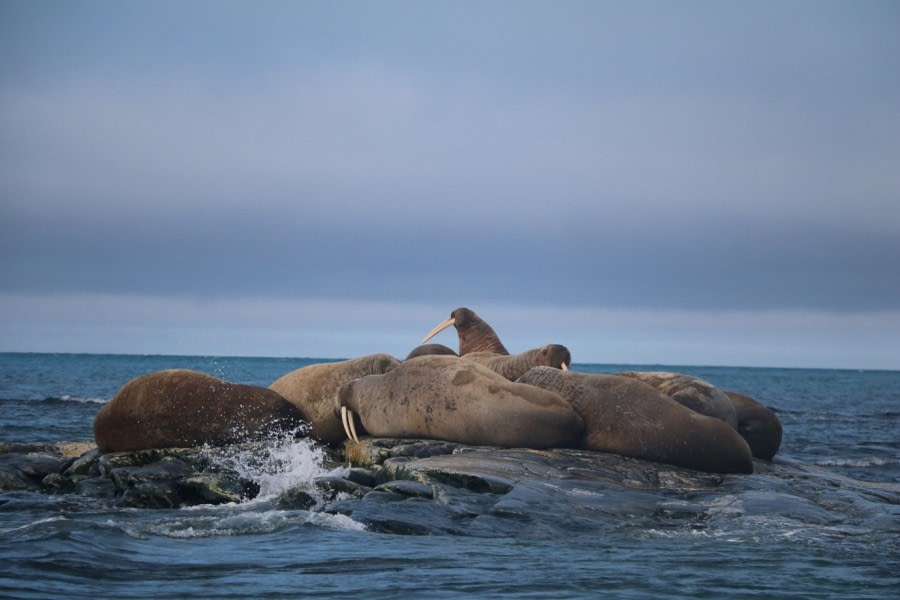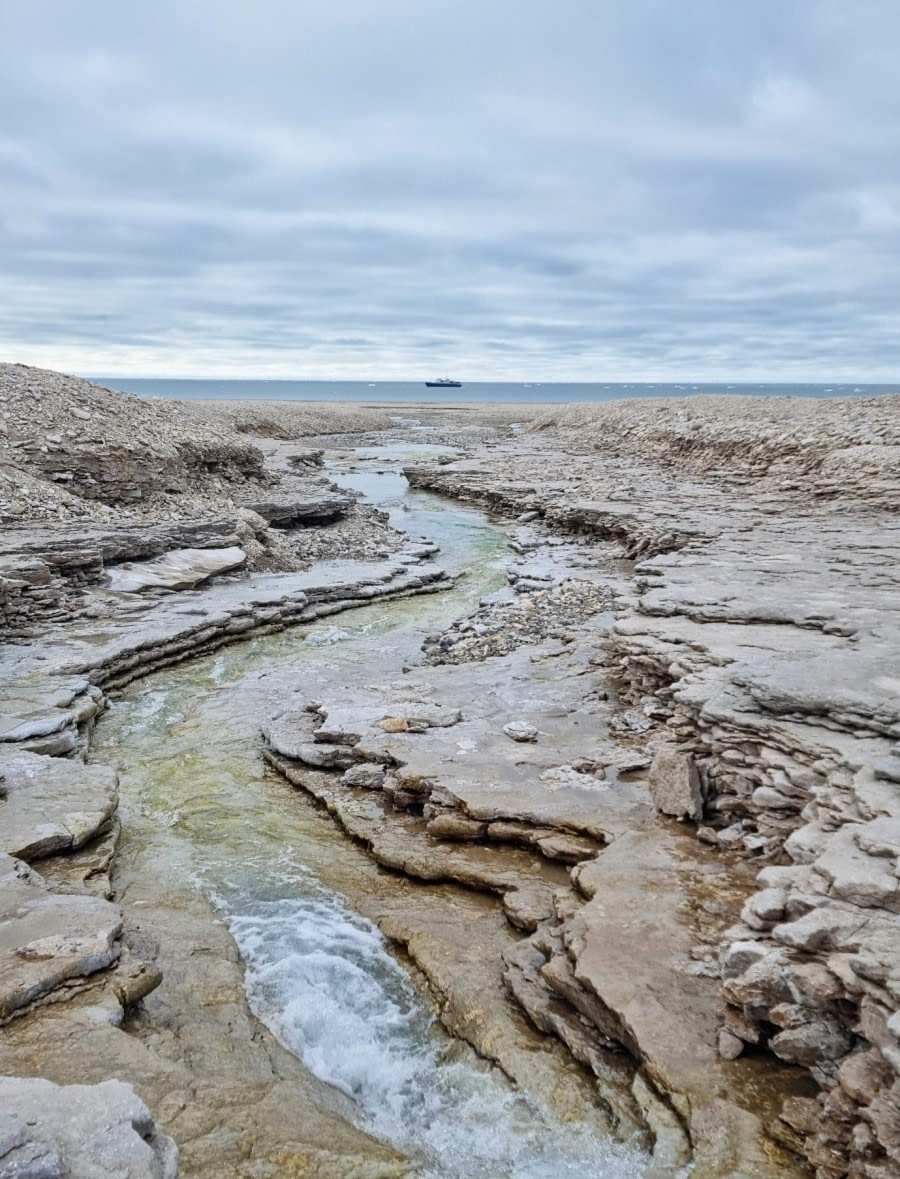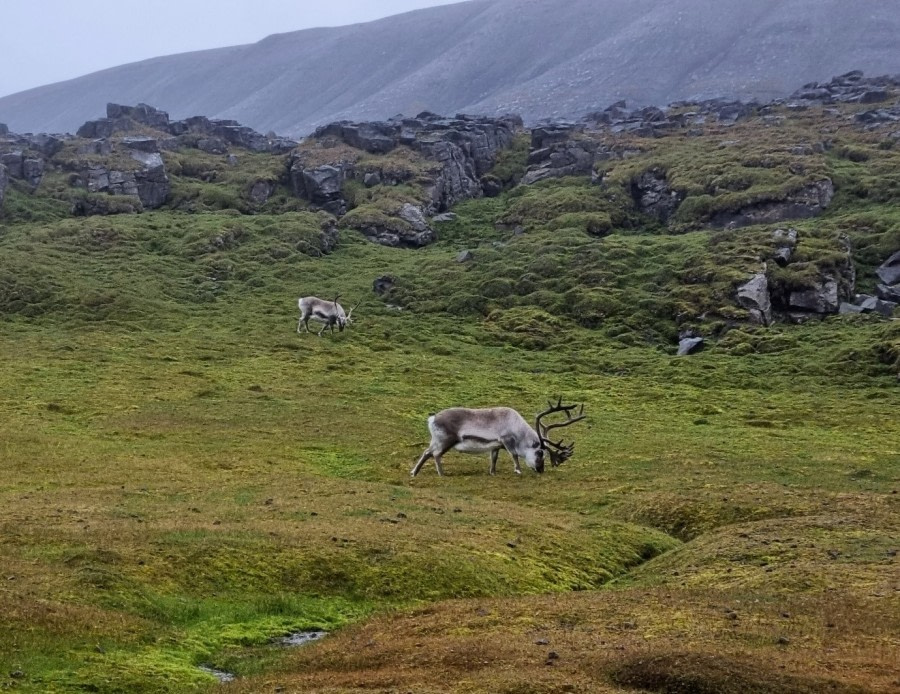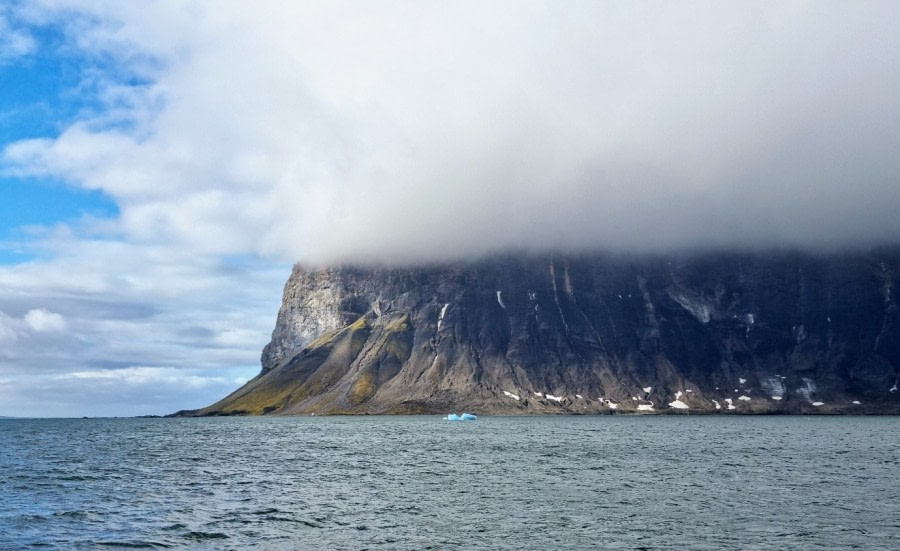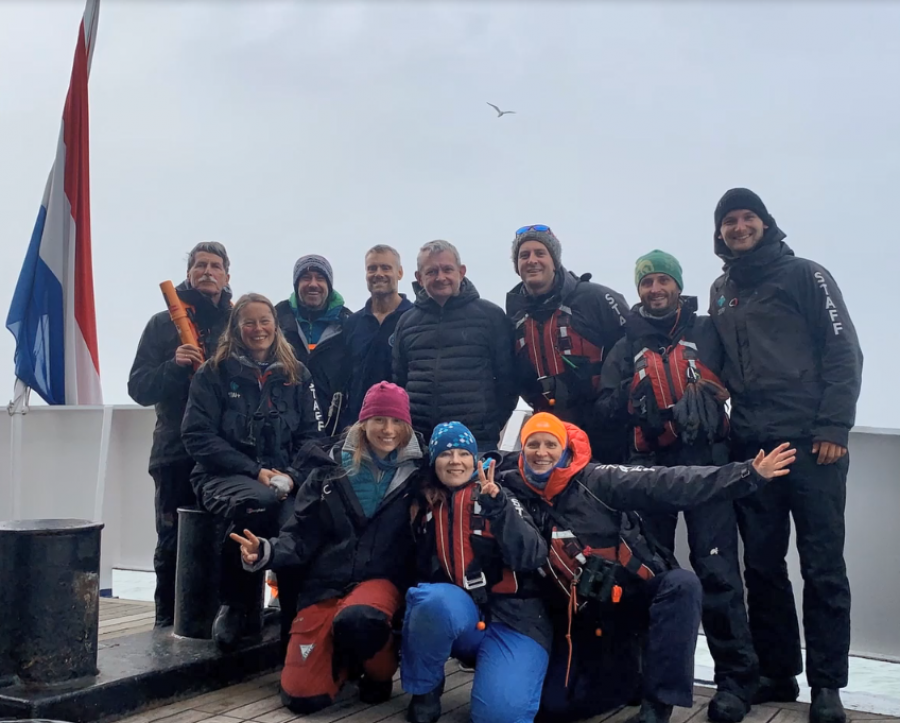| Fecha: | 11.08.2022 |
| Posición: | 76.14 6N, 014.56.5E |
| Viento: | NW 3 |
| Clima: | Overcast |
| Temperatura del Aire: | +11 |
In the afternoon passengers started to arrive at what can truly be called “an authentic site”: the Longyearbyen coal harbour. It is about to be closed as coal mining at Svalbard’s only surviving mine – supplying the local power plant - will cease in a few years’ time, the coal to be replaced by a more environmentally- friendly fuel. Once on board the passengers started to get acquainted with the ship and were soon invited to a general introduction. A safety briefing was followed by an “abandon-ship” exercise: the alarm signal sounded, we took our life belts up to the lounge and inspected the lifeboats. After a welcome speech by our captain Yevgeni we all raised a toast to a good cruise. Then it was time to enjoy the dinner prepared by the chef and his team. Most of us retired early after a long day’s travelling, but some hardy passengers enjoyed the sight of glaciers at Prins Karl’s Forland well into the night.
